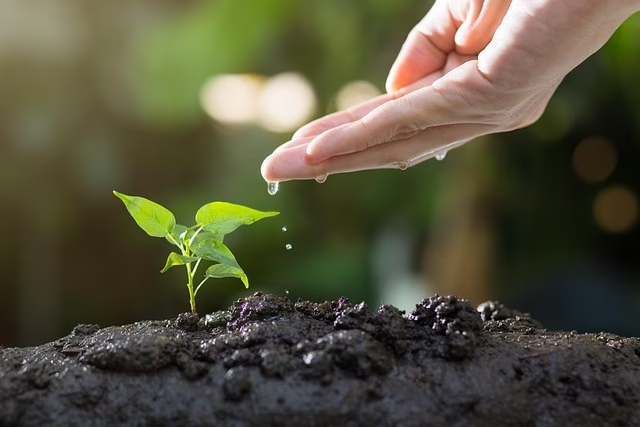Signs Your Houseplant Is Overwatered and How to Fix It
Houseplants bring beauty and fresh air to our homes, but one of plant owners’ most common mistakes is overwatering. If your houseplant is overwatered, it can suffer from root rot, yellowing leaves, and other issues that threaten its survival. I know how frustrating this can be—I’ve been there myself. Let me share my experience and how I managed to fix it.
Table of Contents
My Overwatering Disaster
A few years ago, I bought a beautiful pothos plant, eager to watch it grow and thrive. I thought watering it frequently would keep it lush and green. But within weeks, its leaves started turning yellow, and the soil was always damp. Then came the worst part, the dreaded mushy stems and a musty smell from the pot. My heart sank when I pulled the plant out of the soil and saw the black, rotting roots.
I panicked, thinking I had killed my plant. But instead of tossing it, I decided to learn what went wrong and how to fix it. Through trial and error, I revived my pothos, and now I want to help you do the same!
Why Overwatering Is Harmful
Water is essential for plant health, but too much of it can suffocate the roots, preventing oxygen from reaching them. Over time, waterlogged soil can encourage fungal growth, leading to root rot and plant decline. Knowing the signs of a houseplant is overwatered can help you take action before it’s too late.
Signs Your Houseplant Is Overwatered
1. Yellowing Leaves
If your plant’s leaves are turning yellow, especially the lower ones, it may be receiving too much water. Overwatering causes the roots to become oxygen-starved, leading to leaf discoloration.

2. Wilting Despite Wet Soil
While under-watered plants wilt due to dryness, overwatered plants can also wilt despite the soil being wet. This happens because the roots are damaged and cannot absorb water properly.
3. Soft, Mushy Stems
Overwatering can cause the plant’s stems to become soft and mushy. This is a sign of decay, often due to root rot, and indicates that immediate action is needed.

4. Mold or Fungus on the Soil Surface
A white, fuzzy layer on the soil surface suggests excessive moisture, creating a breeding ground for mold and fungus. This is a clear indicator that your houseplant is overwatered.
5. Root Rot
When you remove your plant from its pot, check the roots. Healthy roots are white and firm, while rotting roots are dark, mushy, and foul-smelling. Root rot is a serious issue that can kill the plant if not addressed quickly.
6. Brown or Black Leaf Tips
While brown tips can also indicate underwatering, houseplants is overwatered often develop soft, dark brown or black leaf tips due to excessive moisture and fungal infections.
7. Slow or Stunted Growth
A houseplant is overwatered may struggle to grow. Instead of producing new leaves and shoots, it may remain stagnant because the roots are too damaged to function properly.
8. Leaves Falling Off
Houseplant is overwatered often shed their leaves prematurely, even if the foliage appears green. This happens when the plant can no longer sustain its damaged root system.
9. Gnats or Pests Around the Soil
Excess moisture attracts pests like fungus gnats, which thrive in damp soil. If you notice tiny flying insects around your plant, it could be a sign of your houseplant is overwatered.

How I Saved My Overwatered Plant (And How You Can Too!)
I . Stop Watering Immediately
The first step is to halt watering until the soil has a chance to dry out. Avoid adding more moisture to an already saturated environment.
II. Check Drainage
I realized my pot had no drainage holes! I repotted my pothos into a container with proper drainage to allow excess water to escape.


Top On Sale Product Recommendations!
Outdoor elevated planting box – for vegetables, flowers, vanilla – with drainage outlet – heat-resistant and cold-resistant
Price Now: USD 63.73 (Original price: USD 219.09, 71% off)
Click & Buy
III. Remove Affected Leaves and Stems
I trimmed off the yellowing and mushy leaves to prevent further decay, helping my plant focus on new growth.
IV. Repot with Fresh Soil
When I checked the roots, I saw the dreaded black, mushy parts. I used sterilized scissors to cut off the rotting roots and repotted the plant in a well-draining mix.
V. Improve Air Circulation
I placed the plant in a well-ventilated area with indirect sunlight. This helped the soil dry faster and prevented fungal growth.
VI. Use a Well-Draining Potting Mix
I made sure to use the right soil mix, something airy and fast-draining to prevent future waterlogging.
VII. Water Properly
I finally learned the golden rule: water deeply but infrequently. Now, I always check the soil moisture before watering again.
How to Prevent Overwatering in the Future
- Follow a Watering Schedule: Rather than watering on a fixed schedule, check the soil moisture first. Stick your finger an inch into the soil; if it feels dry, it’s time to water.
- Use Pots with Drainage Holes: Avoid decorative pots without drainage, as they trap excess moisture.
- Choose the Right Soil: Ensure your plant has the proper soil type to prevent water retention.
- Avoid Letting Plants Sit in Water: Empty saucers or trays beneath pots after watering to prevent standing water.
- Monitor Humidity Levels: Some Houseplants need higher humidity but lower watering frequency. Adjust accordingly.
Conclusion
Houseplant is Overwatered can feel like a devastating mistake, but it can be fixed! I almost lost my pothos, but with a few changes, I brought it back to life. If you notice yellowing leaves, mushy stems, or a musty odor from the soil, don’t panic—take action. By learning proper watering techniques and ensuring good drainage, you can keep your houseplants healthy, vibrant, and thriving.
Have you ever overwatered a houseplant? Share your experience in the comments below!

